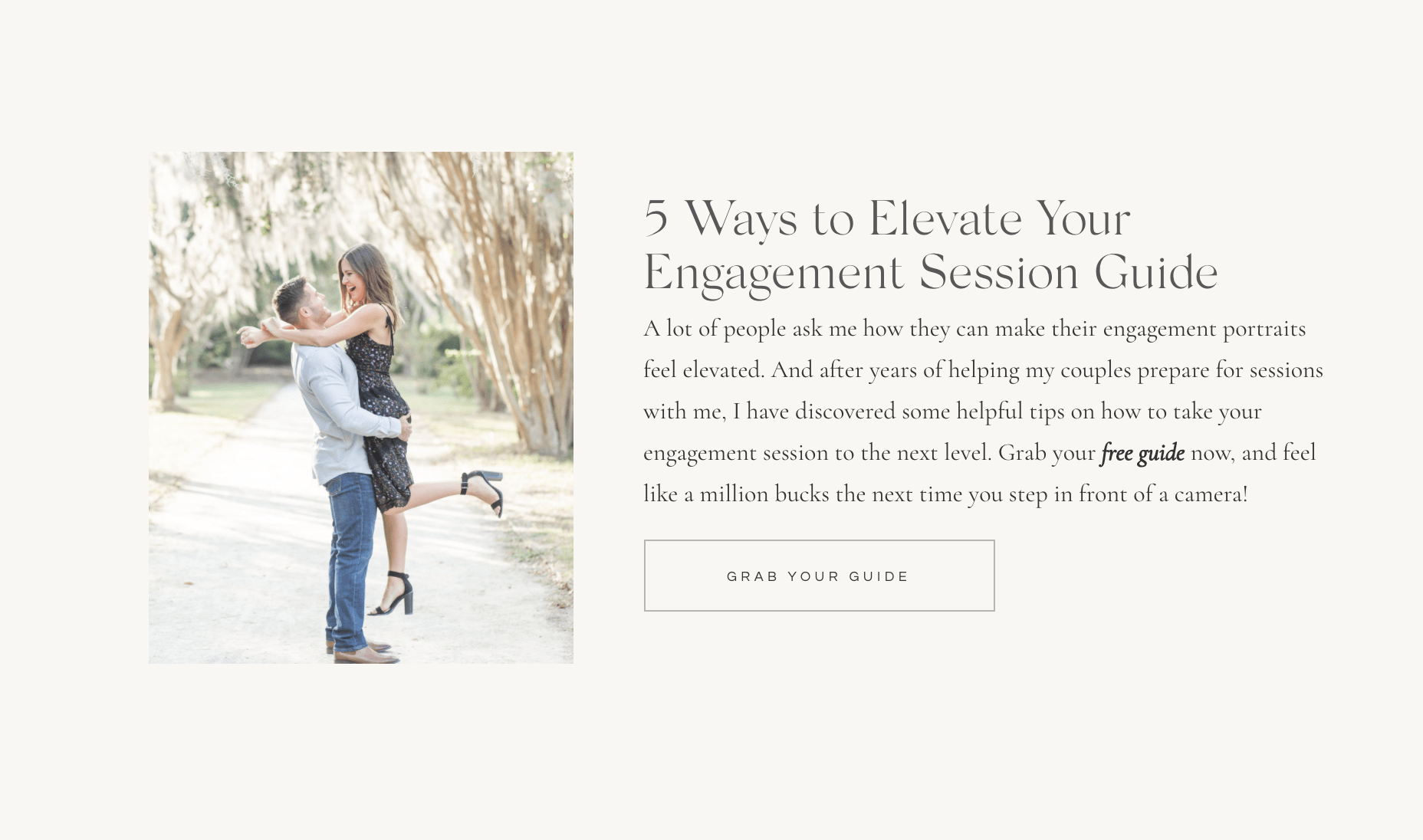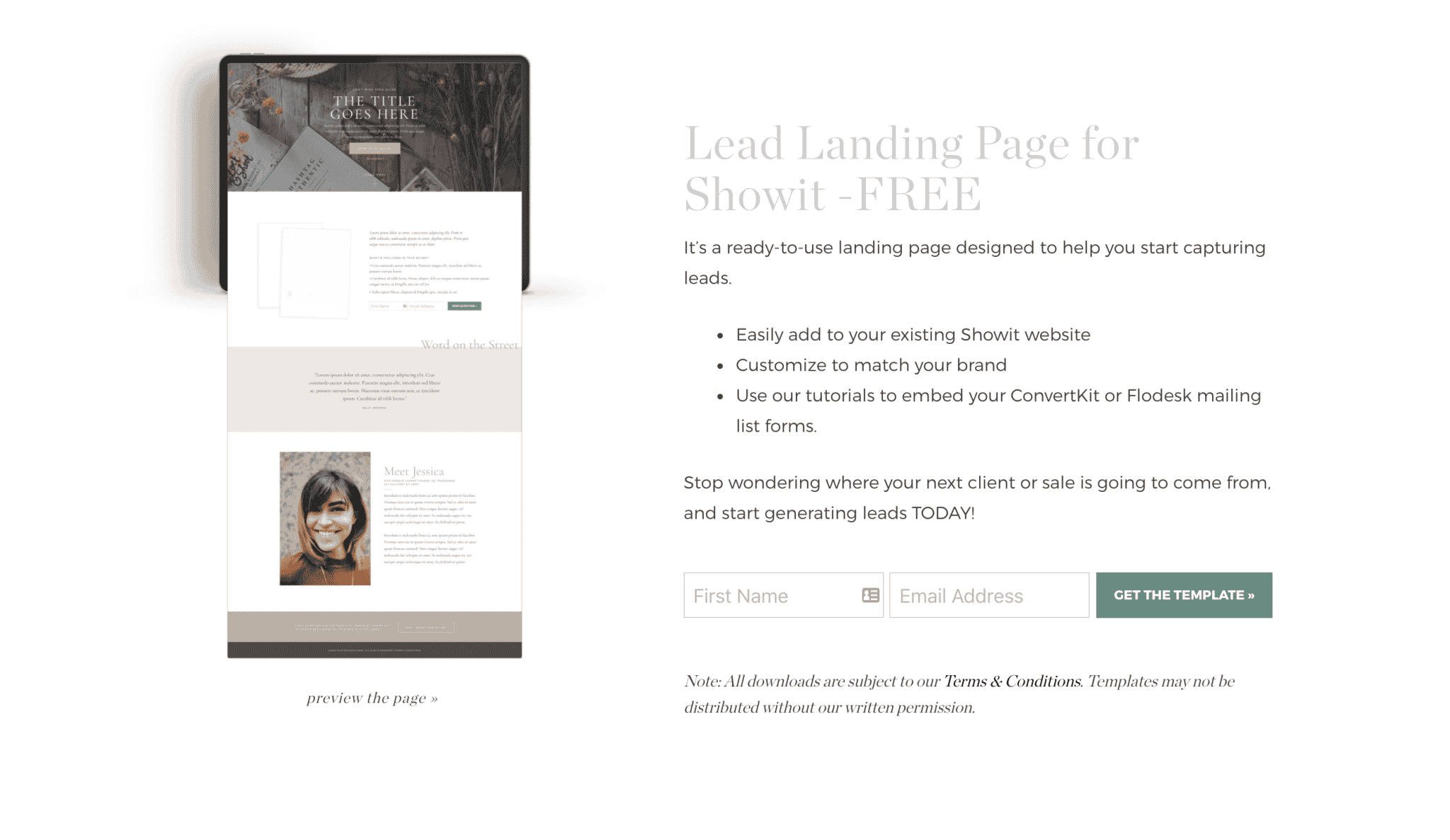One of the most frequent questions we’ve been asked lately is how to create and deliver a free PDF file (lead magnet) in exchange for an email address.
It makes sense. Most of us have probably heard the popular digital marketing cliche that “the money is in the list.” And more businesses are realizing the power of communicating with their audience via email, especially in this last year as many businesses have focused more on online marketing and sales.
Simply put, a bigger email list typically means more revenue.
So how do we get people to sign-up for our email lists?
If your only tactic of collecting email addresses is through a form on your website that says “Subscribe” underneath, you’re probably pretty disappointed with the results.
The most effective way to get someone to sign-up for your email list to give something of value away for free. This freebie is called a “lead magnet” and it can take many different forms. One of the most common ways to do this is to create free content guides in the form of PDFs. The rest of the article will focus on:
- An overview of Lead Magnets and how they work.
- How to design your lead magnet PDF.
- How to deliver your lead magnet PDF.
- Some of our favorite tools for collecting email addresses.
Spoiler: Kit, Flodesk, and Sumo are a few of our favorite tools.
If you’re new to mailing lists, this article is a great place to start as it dives into why to start a list, how to send an email, what to write in your emails, and more. In this article, I’m going to focus on the basics of creating and delivering a downloadable in exchange for an email address.
The Lead Magnet
The first step in this process is going to be to create the content you’re going to give away. You want this content to be really good. You can never give away too much free content. Seriously. The more you give, most likely, the more site visitors will trust you, and (hopefully) the more likely they buy from you.
A lead magnet is an incentive you provide in exchange for, in this case, someone’s email address. The easiest lead magnet to create is a free PDF guide, but you could do a free class, a preset, a mini email course, or an ebook. Mini email courses are great because you don’t have to go through the trouble of designing a PDF—all of the content is delivered via an email sequence!

How it generally works: Someone sees a pop-up or advertisement for your lead magnet, which they click on. This brings them to a landing page that provides some more details and a form to submit their email address. After submitting the form, they receive an email to confirm their subscription and get access to the incentive. Not sure how to make that entire process happen? Keep reading!
The content in your lead magnet is important and it should pre-qualify your leads. The best way to come up with the content for a lead magnet is often by thinking about the kinds of questions you’re asked by inquiries (or on sales calls). For example, if you’re a wedding photographer, a great idea for a lead magnet may be Our Top 5 Wedding Day Timelines for a Stress-Free Wedding Day or 3 Tips for Beautiful Wedding Photos in the Rain.
A few tips:
- Including a benefit in the title often works well (“Stress-Free Wedding Day” and “Beautiful Wedding Photos”).
- Make it pretty. While we don’t recommend sending a 100 page magazine-style guide filled with high-resolution images (email service providers like Gmail often block attachments that are larger than 25 MB), we do recommend including a few images and a great “cover” to the guide to encourage people to click on it. Depending on the content you’re delivering, you may want to consider the fact that people will print it (so avoid including too many images!)

- Educate and lead to further action: What should readers do after consuming the lead magnet? This question is tied to the purpose of the lead magnet. If we’re using the example above, and your lead magnet is Our Top 5 Wedding Day Timelines for a Stress-Free Wedding Day, you might share those tips and subtly work in some of the things you do to make a wedding day flow more smoothly. Do you show up an hour before your scheduled time to walk the property? Do you bring an assistant to make sure you can focus entirely on your couple? Do you include a complimentary engagement session to help couples feel more comfortable in front of the camera? This is a great way to educate prospects on your services and the experience you provide. You might also tell your lead how to inquire about your services at the end of the guide, or encourage them to check out some of your recent work.
- Elaborate on but don’t recycle blog posts. We don’t typically recommend pulling content from a blog post and turning it into a PDF Lead Magnet (unless you’re going to retire that blog post). The lead magnet should be content that people can’t currently find on your website (you want to give them a reason to enter their email address).Once you get this process rolling, it could be a good idea to create lead magnets that pair with your content. So for example, we could create a free guide that goes with this post sharing 101 Lead Magnet Content Ideas. Or we could link to our free Showit Lead Magnet Landing page (hint, hint).
- Include odd numbers. Including a number in your lead magnet title often helps them perform better. Numbers let site visitors know exactly how many helpful items they’re going to receive in the guide (“5 Ways” or “7 Tips”) and it helps frame the amount of time it will take to read the content in their mind. Odd numbers are often more memorable than even numbers so if it works with your content, try to keep the number of items you are sharing odd. But try not to lower the quality of the content in order to hit that odd number. If you only have four solid tips, share four.
Designing the Lead Magnet
Once you’ve written your content, you’re going to want to design it. Lead magnet designs don’t need to be fancy, but they should be visually appealing.
A few tips:
- Design Software: We design our PDFs in Adobe InDesign but if you don’t have the program or InDesign is overwhelming, Google Slides, Keynote and even Google Docs or Word work well. Whatever software you use, make sure it makes it easy to edit text, allows for multiple pages, and that it allows you to export your doc as a PDF. We generally recommend avoiding designing your PDF in Photoshop since it makes editing text and designing on multiple pages challenging.
- We’ve also become fans Canva; however, Photoshop and Canva also tend to export each page as an image – which means that text can’t be copied and pasted or read by screen readers (important for the visually impaired). Exporting pages as images also typically results in really large file sizes – which could hurt your deliverability. Many email service providers, including Gmail, limit file sizes in emails to 25 MB. That means that if your PDF is 32 MB, people who put in their email address to download that file may never receive it because their email provider blocks large files from being delivered. You can still make Canva work, but it just be aware of those things!
- We’re often asked if someone could use our Wedding Guide or Timeline templates as their free content. The answer – sure! The thing to keep in mind with using a website page as your lead magnet is that it’s not as hidden as a PDF. So technically, the URL to the page could be passed around on the web. It’s a bit more intensive to do that with a PDF. So whenever it makes sense, we generally recommend a PDF over a hidden webpage.
Delivering the PDF
Once you’ve created your content and your PDF, you’ll want to sign up for a mailing list provider. Your mailing list software will deliver the PDF.
Platform options:
- Flodesk If you’re new to mailing lists, we HIGHLY recommend using Flodesk. It was designed for sending lead magnets in exchange for content and they make the process so simple (and beautiful!). Their support team is incredible (as are their founders), and we’re big fans. We also have an affiliate link that will save you 50% on the monthly cost! Flodesk is the platform we most of the time to email marketing newbies. How to create a signup form + deliver your PDF in Flodesk:
- Kit Kit is a great tool because it’s simple, flexible, and intuitive, and it’s what we’re currently using. Kit is tag-based rather than list-based (like MailChimp). This means you have one list, but subscribers are able to be “tagged” with different labels (this process can be automated). For instance, if someone subscribes to your list to receive a guide about off-camera flash, they might receive a Lighting tag. When you send emails or create email sequences, you can make sure you’re only including people who are interested in that topic. You’ll likely find that other marketing tools you’re using will have an integration with Kit since it’s such a popular tool. How to create a signup form + deliver your PDF in tKit:
- Mailchimp Honestly, we just don’t recommend Mailchimp anymore. We know, we know—they have a free plan that makes it a really easy place to get started. But we can’t tell you how many people who have thanked us after they took our recommendation to switch to Flodesk. What took HOURS to figure out in Mailchimp took MINUTES in Flodesk. Unlike Kit or Flodesk, they also don’t make it easy to have multiple forms that each send a different PDF and then pull all of the subscribers into a single list. You’ll need a separate list in order to send each lead magnet that you have and you’ll need to manually merge the lists in order to send an email to everyone. You’ll also need to pay for any advanced automations, and if you’re getting to the point where you need automations, we recommend going with one of the other software providers as they do automations better! Mailchimp was really designed for sending one-off email newsletters and not for using lead magnets to build your list, but if you want to use Mailchimp, this article will teach you how to send a PDF to your audience once someone subscribes to your list.
Collecting Email Addresses
The last step in this process is to add your signup form to your website and share about your lead magnet.
There are a few ways to do this:
- Landing page
All of our lead magnets have a landing page that shows a picture of the cover of the magnet, tells visitors what it includes and gives them the option to type their email address to get the file delivered directly to their inbox. Landing pages make it easy to share about your lead magnet on social media, run Facebook ads to your page or link to the lead magnet from a blog post.We recommend keeping landing pages super simple and not giving visitors the option to click anywhere on the page except for the spot to enter their email address. That means that if this page is on your main website, don’t include your typical website header or footer.Landing pages can live on their own URL (yourfreeguide.com), as a page on your existing website (yourwebsite.com/guide-name) or on a subdomain (guide.yourwebsite.com). As long as you keep the URL short and easy to remember, all three methods are equally effective.
- Pop Ups and Forms
Pop-ups are a great way to let site visitors know about free content. Most likely, you saw a pop up not long after visiting this page. All of our templates include built-in pop-ups, but we generally recommend using your mailing list provider’s pop up (Flodesk is wonderful for that) or an app such as Sumo. Solutions like Sumo offer more intelligent pop-ups. It’s easier to target people coming from specific referral sources, display a pop-up after a specific action is taken, and segment users when collecting information. Sumo has the added advantage of also being able to deliver automated emails (but at this point shouldn’t replace an email marketing platform). - Highlight on your website
It can also be a good idea to include a photo of your lead magnet, a short blurb and a link to your lead magnet somewhere on your site. We do this in a few different spots to highlight different lead magnets people may be interested in on different pages. We tend to link the sign up button to the landing page, but you could also set the button to open up a pop up that includes your form (depending on how your site is set up).


VIEW THE COMMENTS
Add A Comment